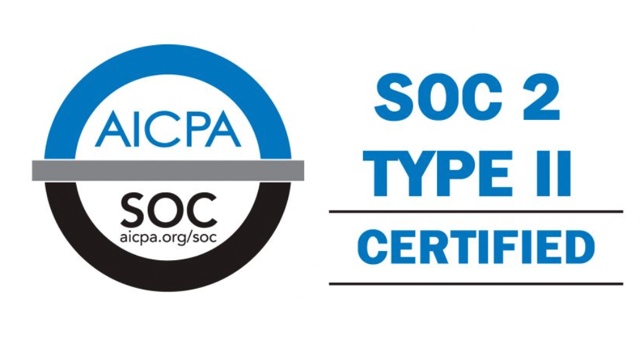
From 100 to 1 million Transfers: Scaling MFT for Enterprise Growth
From 100 to 1 million Transfers: Scaling MFT for Enterprise Growth Ever wondered what happens when your daily file transfers multiply by
Artificial intelligence (AI), Machine Learning (ML) and often Deep Learning (DL) capabilities are now essential components of digital transformation initiatives. The business opportunities that can be achieved with AI are exceptionally promising. Enterprise organizations are increasingly aware that not acting on AI could potentially be a business disaster as competitors gain a wealth of previously unavailable insights and capabilities to grow and delight their customer base. Few if any businesses today believe that “AI is not for us” or that “AI is mostly hype”. Rather, serious AI initiatives are being undertaken worldwide, across industries, and across company sizes.
Businesses are seeking an AI-led transformation and modernization initiative, which involves moving from experimenting to generating business value from their AI investments. The success business investments in AI-related digital transformation are directly tied to the breadth of expertise required to develop, implement, and maintain AI solutions at scale. Many organizations’ lines of business (LOB), IT staff, data scientists, and developers have been working to learn about AI, understand the use cases, define an AI strategy for their business, launch initial AI initiatives, and develop and test the resulting AI applications that deliver new insights and capabilities using machine learning algorithms, especially deep learning.
As organizations scale these initiatives, new questions emerge. They know – indeed, they may have experienced first-hand – that they cannot use standard, general-purpose computing, and existing or legacy storage infrastructure. Also, they realize that AI training (the training of the AI model) and AI inferencing (the use of the trained model to understand or predict an event) require different types of scalable compute with an equally scalable storage infrastructure. While businesses have a better handle on compute, they often underestimate the value of storage in AI. Further, AI applications and especially deep learning systems, which parse exponentially greater amounts of data, are extremely demanding, require powerful parallel processing capabilities based on large numbers of computational cores, and standard storage systems cannot sufficiently enable the execution of these AI tasks. Finally, how such initiatives factor into modernization efforts that include Kubernetes and/or containers, and integration with one or more clouds by way of a hybrid cloud architecture.
IDC research shows that, in terms of storage infrastructure, improper or inadequate attention to detail can quickly derail AI transformation initiatives. To overcome this gap, businesses – that have experimented with existing infrastructure, and are now ready to scale this into production – must overhaul their infrastructure to obtain the required parallel processing performance and do so by investing in more modern storage solutions that scale-out for massive scale and integrated into the cloud, containers, and performance-intensive compute for both global deployment and data access. This is where solutions like IBM Spectrum Scale and IBM Elastic Storage System (ESS) provide the necessary components for an AI information architecture. It is suited for AI workloads, containerized deployment and a hybrid cloud deployment specifically focused on AI workloads.
Businesses worldwide are responding vigorously to the new opportunities offered by investments in AI to catalyze their digital transformation initiatives. Artificial Intelligence are a set of technologies that use Natural Language Processing (NLP), image/video analytics, machine learning, knowledge graphs and other technologies to answer questions, discover insights, and provide recommendations. These systems hypothesize and formulate possible answers based on available evidence, can be trained through the ingestion of vast amounts of content, and adapt and learn from their mistakes and failures through re-training or human supervision.
AI is quickly becoming pervasive business-wide in the automation of processes and workflows. In 2019, IDC examined 176 digital transformation use cases across eight line-of-business functional areas, including customer experience, legal and corporate strategy, facilities, and procurement, and estimated that roughly 26% of these use cases were both dependent on AI and currently deployed across most organizations. By 2022, IDC expects that at least 60% of these AI-centric use cases will be deployed in at least 65% of Global 2000 organizations, representing a 34% growth from 2019. This means that soon, most leading organizations will be leveraging AI technologies, such as natural language processing, machine learning, and deep learning, and speech to text across the organization to scale operations, make sense of unstructured data, and deliver intelligent business insights. Meanwhile, organizations that have still not figured out how to move AI-based use cases from proof of concept (POC) to production will fall further behind, widening the digital divide.
Machine Learning (ML) is a subset of AI techniques that enables computer systems to learn and improve their behavior for a given task without having to be programmed by a human. Machine learning models are algorithms that can improve over time by testing themselves repeatedly using large amounts of structured and/or unstructured data until they are deemed to have “learned” a task, e.g., recognizing a human face. Typical DL architectures are deep neural networks (DNNs), convolutional neural networks (CNNs), recurrent neural networks (RNNs), generative adversarial networks (GAN), and many more.

AI software platforms include: Conversational AI software, for example: digital assistants, predictive analytics to discover hidden relationships in data and make predictions, text analytics and natural language for recognizing, understanding and extracting value from text, voice/speech analytics for recognizing, identifying and extracting information from audio, voice and speech and image and Video Analytics for recognizing, identifying, and extracting information from images and video, including pattern recognition, objects, colors, and other attributes such as people, faces, emotion, cars, and scenery to name a few.
Many businesses are well on their way with AI initiatives and have reached a stage where they are ready to start deploying AI at production scale. Others are still experimenting with AI, while a third group is currently at the stage of evaluating what AI applications can mean for their organization.
Regarding the first group (ready to deploy), IDC is seeing a range of AI use cases that businesses, governments, and other organizations have begun to implement. The five most common use cases today are, ranked by the amount that businesses spend on them in terms of hardware, software, and services:
Additional AI use cases that have gained traction in enterprises are (ranked in order of spending on hardware, software, and services) include:
Browse categories

From 100 to 1 million Transfers: Scaling MFT for Enterprise Growth Ever wondered what happens when your daily file transfers multiply by

In today’s fast-paced world of data analytics and AI, optimizing your data infrastructure is key to unlocking valuable insights and driving innovation.

In today’s fast-paced world of data analytics and AI, optimizing your data infrastructure is key to unlocking valuable insights and driving innovation.
We are a forward-thinking technology services provider dedicated to driving innovation and transformation across industries.


| Cookie | Duration | Description |
|---|---|---|
| cookielawinfo-checkbox-analytics | 11 months | This cookie is set by GDPR Cookie Consent plugin. The cookie is used to store the user consent for the cookies in the category "Analytics". |
| cookielawinfo-checkbox-functional | 11 months | The cookie is set by GDPR cookie consent to record the user consent for the cookies in the category "Functional". |
| cookielawinfo-checkbox-necessary | 11 months | This cookie is set by GDPR Cookie Consent plugin. The cookies is used to store the user consent for the cookies in the category "Necessary". |
| cookielawinfo-checkbox-others | 11 months | This cookie is set by GDPR Cookie Consent plugin. The cookie is used to store the user consent for the cookies in the category "Other. |
| cookielawinfo-checkbox-performance | 11 months | This cookie is set by GDPR Cookie Consent plugin. The cookie is used to store the user consent for the cookies in the category "Performance". |
| viewed_cookie_policy | 11 months | The cookie is set by the GDPR Cookie Consent plugin and is used to store whether or not user has consented to the use of cookies. It does not store any personal data. |
Thank you for submitting your details.
For more information, Download the PDF.
Thank you for registering for the conference ! Our team will confirm your registration shortly.
Invite and share the event with your colleagues
IBM Partner Engagement Manager Standard is the right solution
addressing the following business challenges
IBM Partner Engagement Manager Standard is the right solution
addressing the following business challenges
IBM Partner Engagement Manager Standard is the right solution
addressing the following business challenges